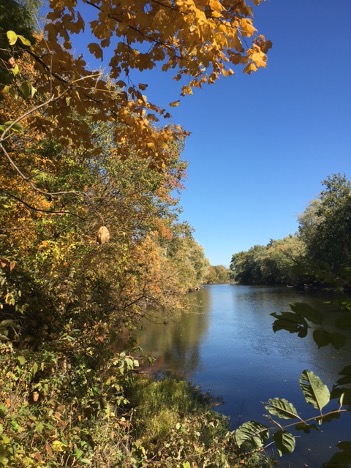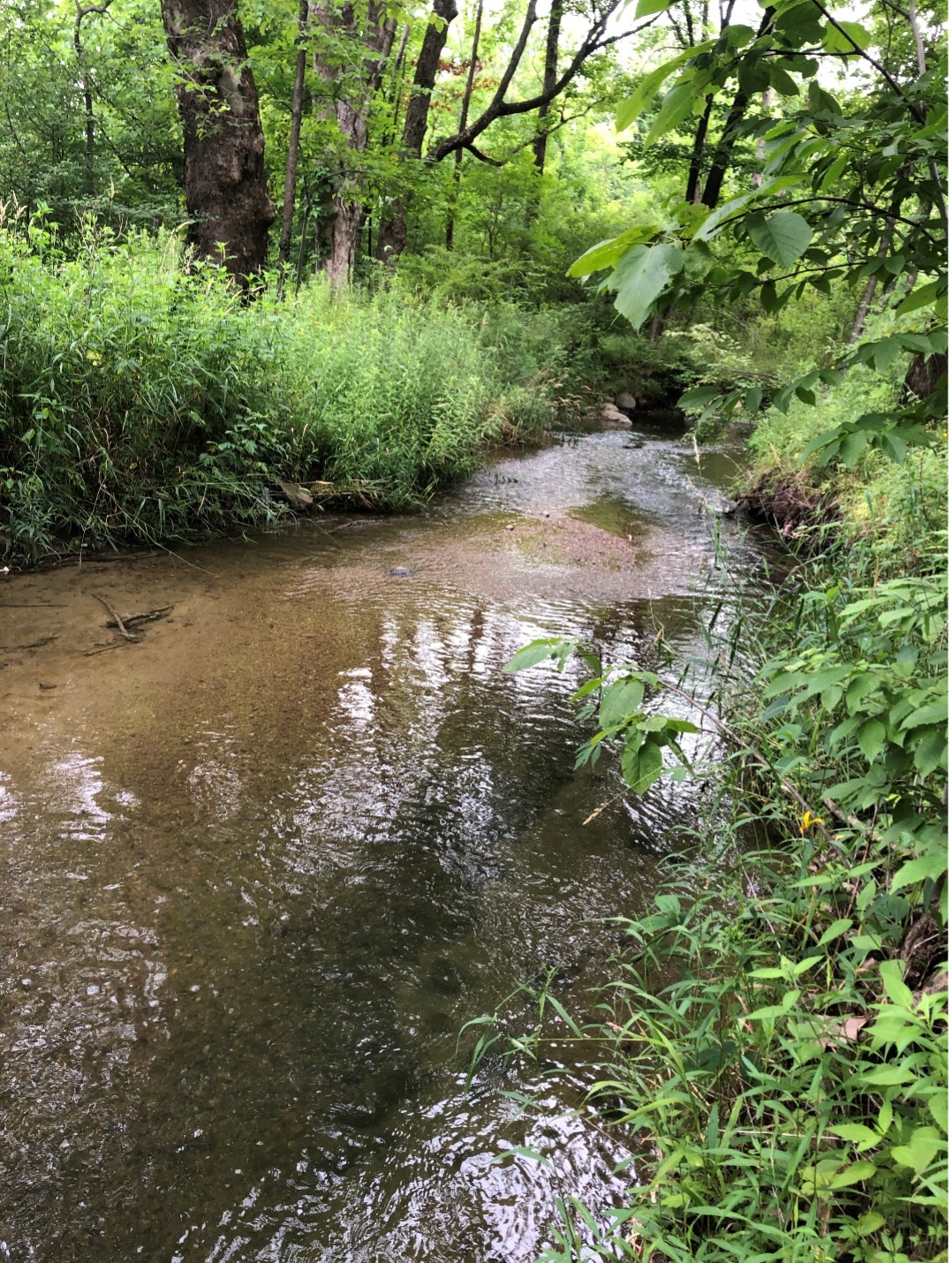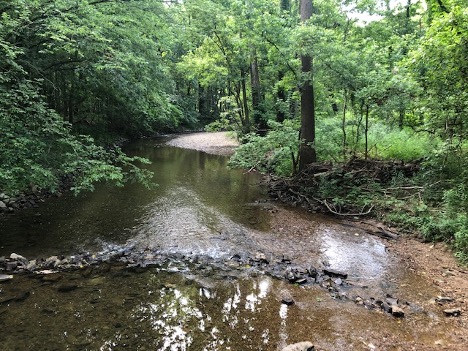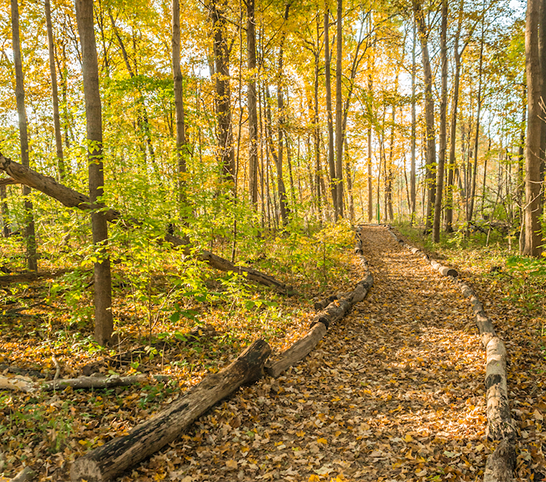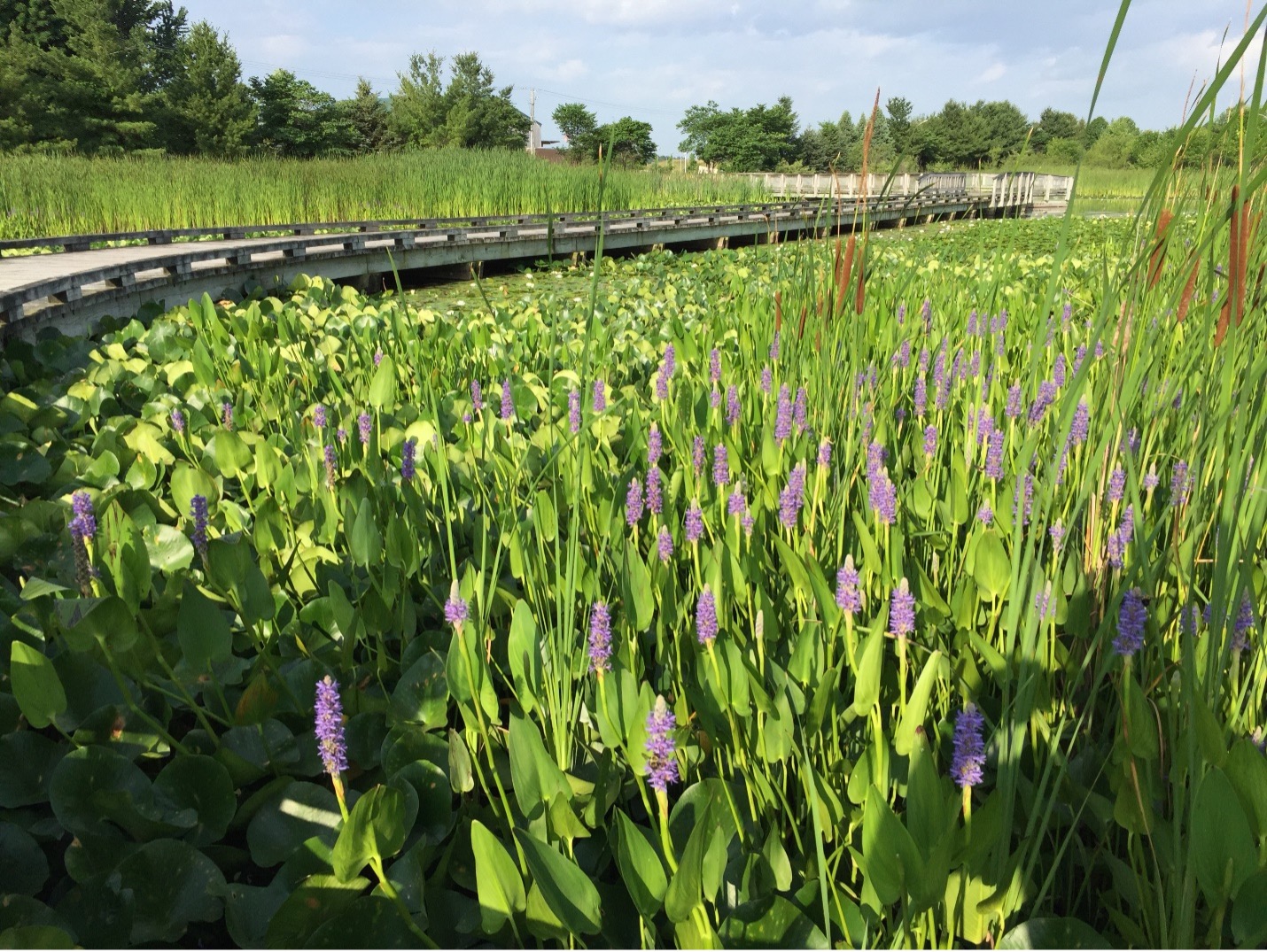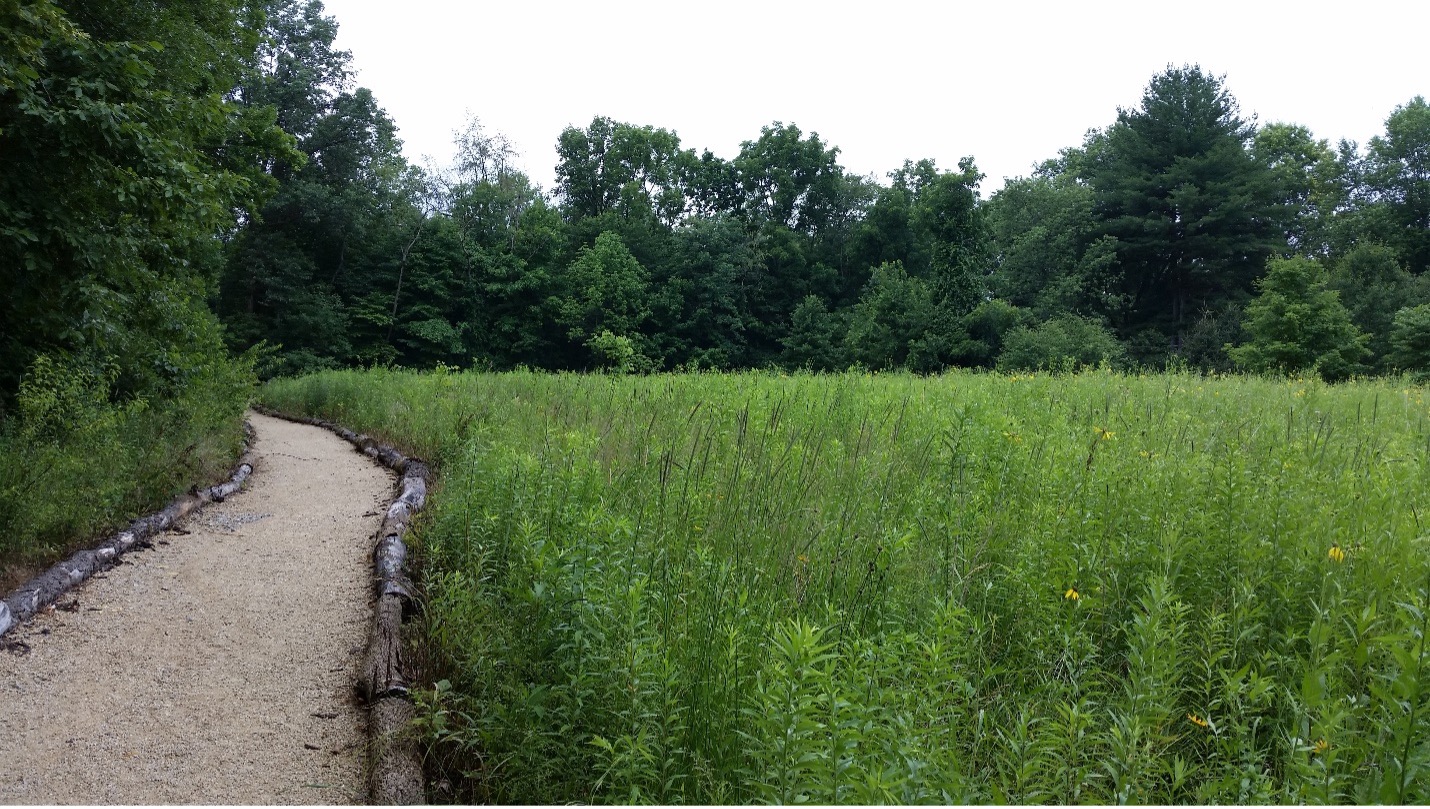Natural Resources
The air we breathe, the water we drink, and the land where food and habitat grows all have one thing in common: They are natural resources and without them, we would not survive. We depend on these not only as basic needs for survival but also for our economy. The allocation of our natural resources is a very important factor in balancing the supply and demand within our economy as well as conserving for future generations.
Natural Resource Management
Here at Carmel Clay Parks & Recreation, we understand the importance of natural space. We strive to maintain our parks as a healthy and sustainable home for flora and fauna—our local plants and animals—and a natural space for all of us to enjoy.
To ensure our parks get the attention they need, we have a team dedicated to monitoring and maintaining the requirements of our parks. Day in and day out, our Parks & Natural Resources Team is on the frontline of stewardship for our parks. They manage everything from the roads and trails to the drinking fountain and restroom amenities while focusing on the overall wellbeing of the park systems. Keeping clean grounds expresses how we value the land and ultimately affects the overall health of each ecosystem.
Each park has varied needs. We follow unique management plans established to keep the team on track for properly caring for our properties. There is a lot of factors that go into managing land! We look at the history of the area, what it used to be and what it is now, to make sure our management plans will be sustainable. We also look at many other features of the land including the soil, topography, and surrounding property. Based on these assessments, we can evaluate the appropriate plant communities that are commonly found in an area as well as avoid plants that do not belong. One of our top priorities is ensuring appropriate plants establish and thrive on our properties so they can serve as the foundation for lasting habitat.
Water Quality Monitoring
Citizen Science volunteers monitor the water quality of Cool Creek, Carmel Creek, and Bear Creek throughout the year with tests like pH, turbidity, flow and macro-invertebrate counts. The tests results are uploaded to the Hoosier Riverwatch website, where you can compare water quality data from streams in our parks across the White River watershed and the whole state.
-
How can I make my yard and garden more sustainable?
- Plant native!
- Remove any plant that is on the Terrestrial Plant Rule. This will make room for the natives. Learn more about the Terrestrial Plant Rule from the Indiana Native Plant Society.
- Consider using less pesticides on your lawn. If you plant your yard with native plant species, you will have less issue controlling the species that you don’t want to be there. Some species you may be trying get rid of, such as dandelions, may actually be good food for critters.
- Check out our partners at Hamilton County Soil and Water Conservation District for more information on upcoming plant sales as well as local nurseries that sell native plants.
-
Why is it important to protect our natural resources?
- They provide the balance that all living things need to survive.
- When water is not clean, we invest in infrastructure to clean it, which in turn takes more resources to provide that filtration or treatment.
- When the soil is contaminated, we dedicate resources to mitigate the contamination, to engage healing of the soil.
- When the plants and animals are discarded for being “in the way” instead of looked at as an asset to the clean air that we breathe, then we find ourselves looking for ways to invest in clean air strategies.
- We only have the resources that we are left with. For future generations to enjoy what we have been able to enjoy, we need to lead sustainable lifestyles and live within our means.
- We need to do our best to protect the natural resources that we have not only for us, but the plants and animals that live with us.
-
How much land does CCPR manage?
- CCPR maintains and manages over 600 acres of parkland!
- Our parks and greenways include natural spaces, playgrounds, and green space.
- We currently manage public access to 16 parks and 4 greenways.
- Whether you are a hiker, a birdwatcher, a nature photographer, an angler, or an overall nature enthusiast, we have parks and trails for you to explore.
Managing a variety of parks allows us to provide outdoor nature and recreation opportunities for our community. It is important to us to provide parks that offer balance. Not every park will be a playground destination and not every park will have acres and acres of natural area to explore. Our goal is to provide nature and recreation opportunities that meet the needs of our neighbors.
For example, Carey Grove Park is a small neighborhood park. It boasts open space, reimagined playground equipment, and traditional exercise equipment. However, it does not have vast natural spaces to explore. On the other hand, we have Hazel Landing Park. With its access to the White River, acres of forested natural land, and trails it allows park users to immerse themselves in nature. These parks are very different, but they are both necessary for providing the best possible park and recreation experiences for our community.
Along that same vein, all outdoor space can play a role in supporting the long-term sustainability of our community. Consider how, just like our parks, your backyard is part of a much larger local, national and worldwide ecosystem. It’s important to remember that we all have a hand in our natural resources, and no contribution is too small.
At the end of the day, we do not manage the most land of any park system in Indiana, and that won’t ever be the case. However, we strive to manage and maintain the land within our Carmel Clay borders with a detailed and deliberate approach. Our promise to our community is that our land will be sustainably managed so that it can be enjoyed for generations to come.
-
How do you ensure the water coming out of Flowing Well is safe?
We work closely with the Carmel City Water/Utilities department to ensure the water is tested regularly.
-
Why do natural spaces matter?
In today’s world, to keep up with a growing economy, population development is unavoidable. When infrastructure takes the place of natural space, natural resources are displaced. This means they must move elsewhere, or they are eliminated.
Natural spaces are also important for humans. Natural spaces allow us to connect with our environment, enjoy recreation, access fresh air, and ponder the natural world. Nature is a place for all, and it has been revered by many generations of people before us.
It is imperative that we factor natural spaces into our planning, development, and everyday lives. Natural space is only available if we allow it to be available. It is up to us to determine the balance between development and allowing natural space to remain natural.
Hamilton County Indiana Natural History
Indiana has a rich natural history! Around 70,000 years ago the Ice Age began and brought the first glaciers to shape our state. Over the last several thousand years, different glacial periods affected our state including the Illinoian glacier period and Wisconsin glacier period. As these glaciers receded and melted, runoff formed rivers and streams. White River is a perfect example of this with gravel beds at the bottom of the river where glacial deposits, called till, were transported through the ice sheets, dropped out, and ended up right here in Indiana.
After the glaciers receded, Hamilton County became predominantly a hardwood forest. Oak, maple, tulip, walnut, and beech trees grew. There were a few prairies and bogs through the state, but a majority was forested habitat. Bear, wolves, deer, and elk roamed the land.
The very first people to come to this area were thought to arrive around 10,000 years ago following the game migrating through. Several tribes and native people moved through the area before European settlers arrived, with William Conner being the first to settle in the early 1800s, building his first cabin at Conner Prairie. As settlers arrived, they began to clear forests and build infrastructure. Roads, establishments, and townships were formed. Much of the forest that was here in Hamilton County was logged and drained to support infrastructure and agriculture for the growing population.
Watersheds
Rivers and creeks are the products of glaciers melting and receding thousands of years ago. Today, these rivers and creeks hold a strong foothold in our ecological system.
What is a watershed?
A watershed is the area of land that helps channel water through creeks, streams, and rivers eventually leading into the same body of water. All our actions upstream, whether good or bad, affect the downstream flow. Here in Carmel, everything we do within our watershed will affect the White River, Wabash River, Ohio River, Mississippi River, and eventually the Gulf of Mexico.
Our community is part of the Upper White River Watershed. Our parks align with 3 active corridors of this watershed.
Different Ecosystem Types
There are several ecosystem types in Indiana, and you can explore some of these ecosystems in your Carmel Clay parks.


